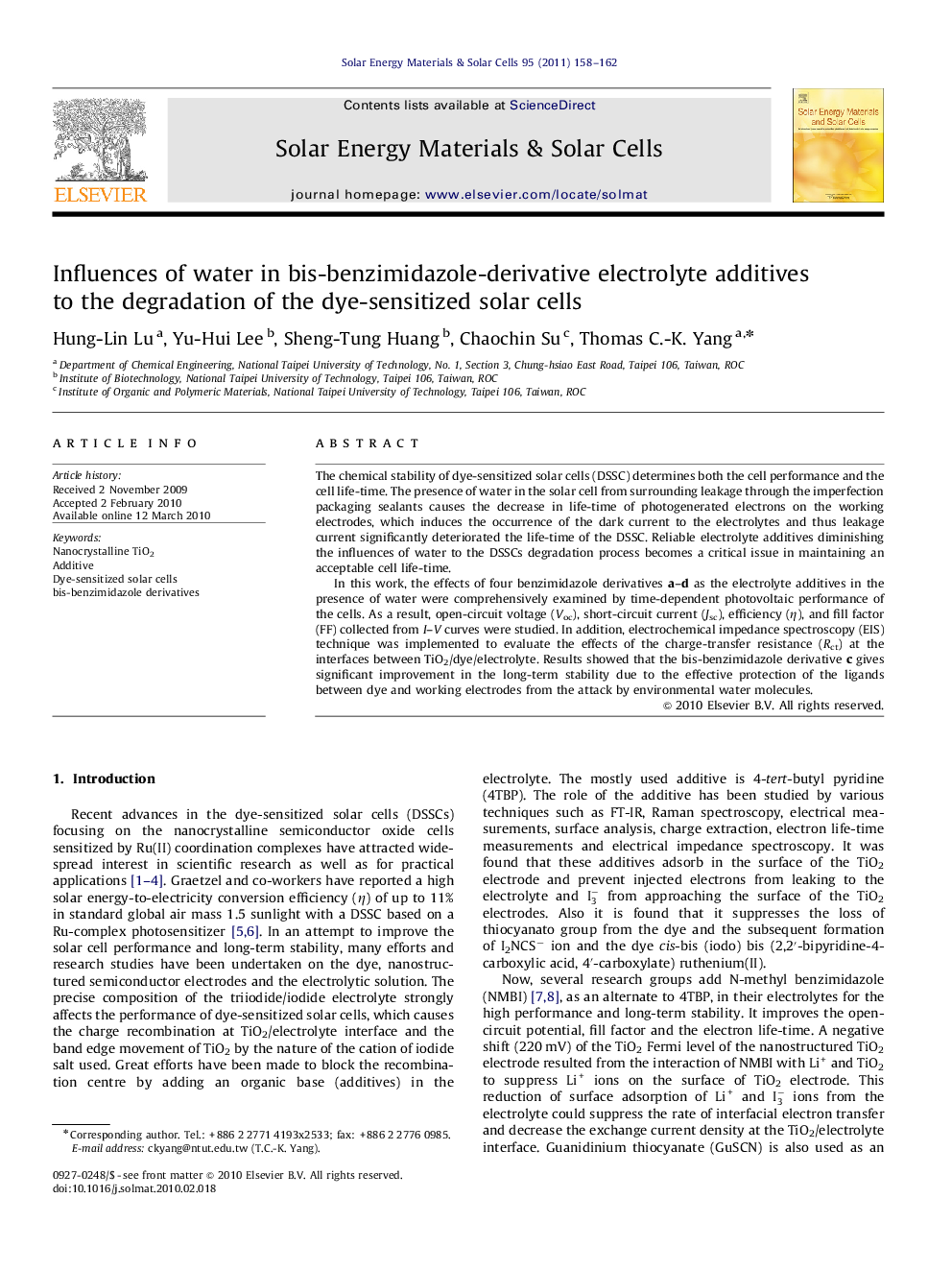| Article ID | Journal | Published Year | Pages | File Type |
|---|---|---|---|---|
| 79140 | Solar Energy Materials and Solar Cells | 2011 | 5 Pages |
The chemical stability of dye-sensitized solar cells (DSSC) determines both the cell performance and the cell life-time. The presence of water in the solar cell from surrounding leakage through the imperfection packaging sealants causes the decrease in life-time of photogenerated electrons on the working electrodes, which induces the occurrence of the dark current to the electrolytes and thus leakage current significantly deteriorated the life-time of the DSSC. Reliable electrolyte additives diminishing the influences of water to the DSSCs degradation process becomes a critical issue in maintaining an acceptable cell life-time.In this work, the effects of four benzimidazole derivatives a–d as the electrolyte additives in the presence of water were comprehensively examined by time-dependent photovoltaic performance of the cells. As a result, open-circuit voltage (Voc), short-circuit current (Jsc), efficiency (η), and fill factor (FF) collected from I–V curves were studied. In addition, electrochemical impedance spectroscopy (EIS) technique was implemented to evaluate the effects of the charge-transfer resistance (Rct) at the interfaces between TiO2/dye/electrolyte. Results showed that the bis-benzimidazole derivative c gives significant improvement in the long-term stability due to the effective protection of the ligands between dye and working electrodes from the attack by environmental water molecules.
